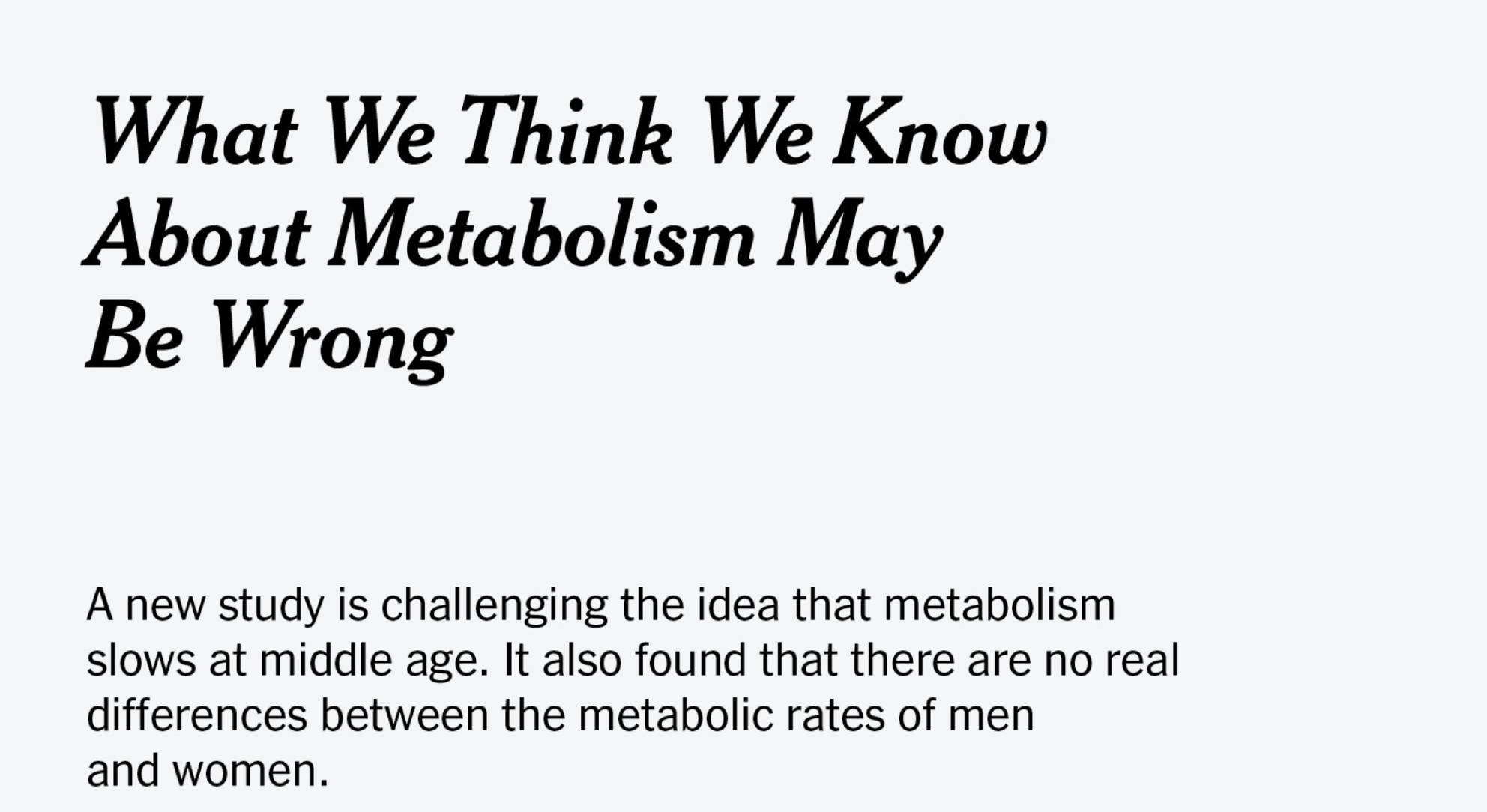The conventional wisdom about metabolism says people gain weight as they age because their metabolisms slow down. The metabolism of women is slower than that of men. That’s why they have a hard time controlling their weight. The menopause only worsens things, slowing women’s metabolisms even further.
It’s all wrong, according to a paper published in Science on Thursday. As far as metabolism is concerned, researchers discovered that there are four distinct periods of life based on data from nearly 6,500 people. After controlling for other factors, they also found no differences in metabolic rates between men and women.
Researchers’ findings could reshape the science of human physiology and have implications for medical practices, such as determining appropriate drug dosages for children and older adults.
“This paper will be in textbooks,” said Leanne Redman, a physiologist at Pennington Biomedical Research Institute in Baton Rouge, La., who called it “a pivotal paper.”
The paper was accompanied by a perspective written by Rozalyn Anderson, a professor of medicine at the University of Wisconsin-Madison who studies aging. Her reaction to its findings was “blown away,” she said in an interview. She added, “We will have to revise some of our ideas.”.
Nevertheless, the study’s implications for public health, diet, and nutrition are limited at the moment since it offers a “30,000-foot view” of energy metabolism, according to Doctor, director of the Center for Human Nutrition at Washington University School of Medicine in St. Louis, who was not involved in the study. Adding, “I don’t think you can make any new clinical statements” for an individual. The issue of weight gain is the same as it has always been: people eat more calories than they burn.
Since metabolic research is expensive, most published studies have had few participants. Herman Pontzer, an evolutionary anthropologist at Duke University, said the project’s participants agreed to share their data. Over 80 co-authors contributed to the study. They were able to answer general questions about metabolism over a lifetime by combining data from half a dozen labs collected over 40 years.
Research centers involved in the project studied metabolic rates using a method considered the gold standard – doubly labeled water. By measuring the amount of carbon dioxide exhaled during daily activities, calories are burned.
Additionally, the investigators had participants’ heights, weights, and percentage body fat, which allowed them to measure fundamental metabolic rates. Although smaller people burn fewer calories than larger people, the group asked: Did their metabolisms differ based on their size and percent fat?
It was clear that we didn’t understand how body size and aging affect metabolism,” Doctor said. “These are basic fundamental questions that would have been answered 100 years ago.”
They found that metabolism differs across four distinct stages of life for all people.
- In infancy, up until the age of one, calorie burning is at its peak, accelerating until it is 50 percent higher than adult consumption.
- A person’s metabolism slows about three percent per year between the ages of 1 and 20.
- It remains constant from 20 to 60 years of age.
- In addition, after age 60, it declines by about 0.7 percent per year.
They also found no differences between men and women after controlling for body size and muscle mass.
In spite of the fact that metabolic rate patterns hold for the majority of the population, individuals vary. Some people have metabolic rates that are 25 percent lower than the average for their age, while others have rates that are 25 percent higher. In graphs showing the trajectory of metabolic rates over time, these outliers do not change the general pattern.
According to Doctor, the four periods of metabolic life demonstrate there isn’t a constant rate of energy expenditure per pound. Age determines the rate. Her and others’ longstanding assumptions about nutrition science are contradicted by that.
A number of research questions will be raised by studying the trajectory of metabolism over a lifetime and the outliers. What are the characteristics of people whose metabolisms are higher or lower than expected, and is obesity associated with them?
The metabolism of infants was one of the most surprising findings for Doctor. It was expected, for example, that a newborn infant would have a very high metabolic rate. There is a general rule in biology that smaller animals burn calories faster than larger animals.
According to Doctor, babies have the same metabolic rate as their mothers for the first month of life. Upon the birth of a baby, however, “something kicks in and the metabolic rate increases.”
Adult metabolism is also expected to slow in their 40s or, for women, during menopause.
According to Doctor, “we just didn’t see that.”
By age 95, a 20 percent decline in metabolic rate results from the metabolic slowing that begins around age 60.
Although people gain an average of one pound and a half a year during adulthood, they can no longer attribute it to slowed metabolisms.
In spite of consuming only 5 percent of the body’s weight, the heart, liver, kidneys, and brain account for 65 percent of the resting metabolic rate. After 60, he said, metabolism slows down, which may mean vital organs are less effective. Older people tend to suffer from chronic diseases more often, which might explain why chronic diseases tend to affect them most.
Even college students may experience the effects of the metabolic shift around age 20, Klein said. They burn fewer calories after they finish college than they did when they started.”
Even young people are changing fundamentally around age 60, regardless of how they appear.
“Retaining youth is a myth,” Doctor said. The biology doesn’t support that. Around the age of 60, things start to change.”
“There is a point at which things no longer remain the same as they once were.”

